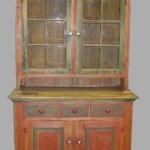What Paint Color Goes With Sage Green Cabinets?
Sage green cabinets offer a sophisticated and nature-inspired aesthetic for kitchens, bathrooms, and other areas of the home. Selecting the right wall paint color to complement sage green is crucial for achieving a cohesive and visually appealing space. The ideal paint color will not only enhance the inherent beauty of the sage green but also contribute to the overall atmosphere of the room. This article explores various paint color options that harmonize with sage green cabinets, providing insights into their unique characteristics and suitability for different design styles.
Understanding Sage Green and Its Undertones
Before delving into complementary paint colors, it’s important to understand the nuances of sage green itself. Sage green is typically a muted, grayish-green, often incorporating hints of silver or even blue. The specific undertones within a particular shade of sage green will significantly influence the best paint color pairings. Some sage greens may lean towards a cooler, more blue-toned palette, while others may possess warmer, more yellow-based undertones. Careful consideration of these subtle variations is essential when selecting a wall color.
Examining the cabinet finish under different lighting conditions is also crucial. Natural light, artificial light, and even the time of day can alter the perceived color of the sage green. Bringing paint swatches into the room and observing them alongside the cabinets throughout the day will provide a more accurate representation of how the colors will interact. Failure to account for these lighting variations can result in a mismatched or unbalanced color scheme.
Furthermore, it's beneficial to consider the existing elements within the room, such as flooring, countertops, and hardware. These elements contribute to the overall color palette and should be factored into the paint color selection process. For instance, warm-toned wood flooring might benefit from a cooler wall color to create a balanced contrast, while cooler-toned countertops may pair well with a warmer, more inviting wall color.
Neutral Paint Colors: A Timeless Choice
Neutral paint colors offer a versatile and reliable option for complementing sage green cabinets. These colors are inherently adaptable and can create a calming and sophisticated backdrop that allows the sage green to take center stage. Different shades of white, gray, and beige can all work beautifully, depending on the specific shade of sage green and the desired aesthetic.
White: White is a classic choice that provides a clean and crisp contrast against sage green. Opting for warm whites, such as off-white or cream, can soften the contrast and create a more inviting atmosphere, especially if the sage green has warmer undertones. Conversely, cooler whites, like bright white or slightly grayed white, can enhance the crispness and modernity of the space, particularly when paired with cooler sage green shades. Consider the light reflectance value (LRV) of the white paint; a higher LRV will reflect more light, making the room appear brighter and more spacious.
Gray: Gray offers a sophisticated and contemporary alternative to white. The specific shade of gray should be carefully chosen to complement the undertones of the sage green. Light grays, such as a soft dove gray or a barely-there gray, can create a subtle and elegant backdrop. Deeper grays, like charcoal or slate gray, can add drama and depth, but should be used judiciously to avoid overwhelming the space. When selecting a gray paint, consider whether it has cool or warm undertones. Cool grays with blue or green undertones tend to pair well with cooler sage greens, while warm grays with beige or brown undertones complement warmer sage greens.
Beige: Beige provides a warm and inviting neutral option that can soften the overall look of the room. Similar to gray, the best shade of beige will depend on the undertones of the sage green. Creamy beiges with warm, yellow undertones often pair well with warmer sage greens, creating a cohesive and harmonious color scheme. Greige, a blend of gray and beige, offers a versatile neutral that can work with a wider range of sage green shades. The key is to find a greige that balances the warm and cool tones appropriately.
Exploring Complementary and Analogous Colors
While neutral colors offer a safe and reliable option, exploring complementary and analogous colors can create a more dynamic and visually interesting space. These color schemes involve selecting colors that are either opposite or adjacent to sage green on the color wheel, resulting in either high-contrast or harmonious pairings.
Complementary Colors: The complementary color of green is red. While a true red might be too bold for some, muted or desaturated shades of red, such as terracotta, dusty rose, or even a deep burgundy, can create a striking and sophisticated contrast with sage green. These colors can be used as accent colors through accessories, textiles, or even a feature wall. Introducing these complementary colors in smaller doses can add warmth and depth to the room without overwhelming the sage green.
Analogous Colors: Analogous colors are those that sit next to each other on the color wheel. For sage green, these include shades of blue-green and yellow-green. Using these colors can create a calming and harmonious color scheme that evokes a sense of nature and tranquility. Soft blues, such as a muted sky blue or a gentle teal, can complement the coolness of sage green and create a serene atmosphere. Yellow-greens, such as a pale chartreuse or a light olive green, can enhance the warmth and earthiness of sage green. When using analogous colors, it's important to vary the shades and intensities to avoid a monotonous or flat look.
Consider the Color Wheel's Triadic Harmony: The triadic color scheme involves colors that are evenly spaced apart on the color wheel. If green is one of the chosen colors, you would also consider orange and violet. While these may seem like unexpected choices, muted or toned-down versions can create a unique and stylish space. A pale peach or apricot could subtly complement the sage green, while a soft lavender or dusty purple could add a touch of elegance and sophistication. Similar to complementary colors, these triadic colors are best introduced as accents rather than dominant wall colors.
Factors Beyond Color: Texture and Finish
Beyond the actual color, the texture and finish of the paint also play a significant role in the overall aesthetic of the room. Different paint finishes reflect light differently, impacting the perceived color and creating varying levels of sheen and durability.
Matte Finish: Matte paint has a low sheen and provides a smooth, velvety finish. It is excellent at hiding imperfections on walls but is less durable and harder to clean than other finishes. A matte finish can create a soft and understated backdrop that allows the sage green cabinets to stand out. This is a good option for walls that are not prone to splashes or stains.
Eggshell Finish: Eggshell paint has a slightly higher sheen than matte and is more durable and easier to clean. It is a versatile option that works well in most rooms. An eggshell finish can provide a subtle sheen that adds depth and dimension to the walls without being overly glossy.
Satin Finish: Satin paint has a higher sheen than eggshell and is even more durable and easier to clean. It is a good choice for kitchens and bathrooms, where moisture and spills are more common. However, a satin finish can highlight imperfections on walls, so proper surface preparation is essential.
Semi-Gloss Finish: Semi-gloss paint has a high sheen and is very durable and easy to clean. It is often used for trim, doors, and cabinets, but can also be used on walls in high-traffic areas. However, a semi-gloss finish can be too shiny for some rooms and can highlight imperfections. Consider using the same sheen on the trim and the doors to create a cohesive feel.
Choosing the right combination of color, texture, and finish is critical for achieving a balanced and visually appealing space. When selecting a paint color to complement sage green cabinets, it is important to consider the undertones of the green, the existing elements in the room, the desired aesthetic, and the practical considerations of durability and maintenance. By carefully weighing these factors, one can create a room that is both beautiful and functional.

Green Paint Colors Expert Picks Sherwin Williams

The 15 Best Sage Green Paint Colors Havenly Blog Interior Design

Best Sage Green Paint Colors For Kitchen Cabinets Homes

Best Green Paint Colors For 2025 Cabinets Walls More
:max_bytes(150000):strip_icc()/267076773_235560735378371_6472952759839717254_n-301c67adad7b42eebd0839f1c1f9e1ce.jpg?strip=all)
18 Kitchens With Sage Green Cabinets You Ll Want To Copy

10 Best Sage Green Paint Colors For Every Space

8 Sage Green Kitchen Cabinet Ideas Lily Ann Cabinets

27 Designer Approved Green Kitchen Cabinet Ideas For 2025

The Best Colors For Sage Green Kitchen Cabinets To Get Look You Want Mod Mood

Top 15 Green Paint Colors For Kitchen Cabinets By Ez
Related Posts








